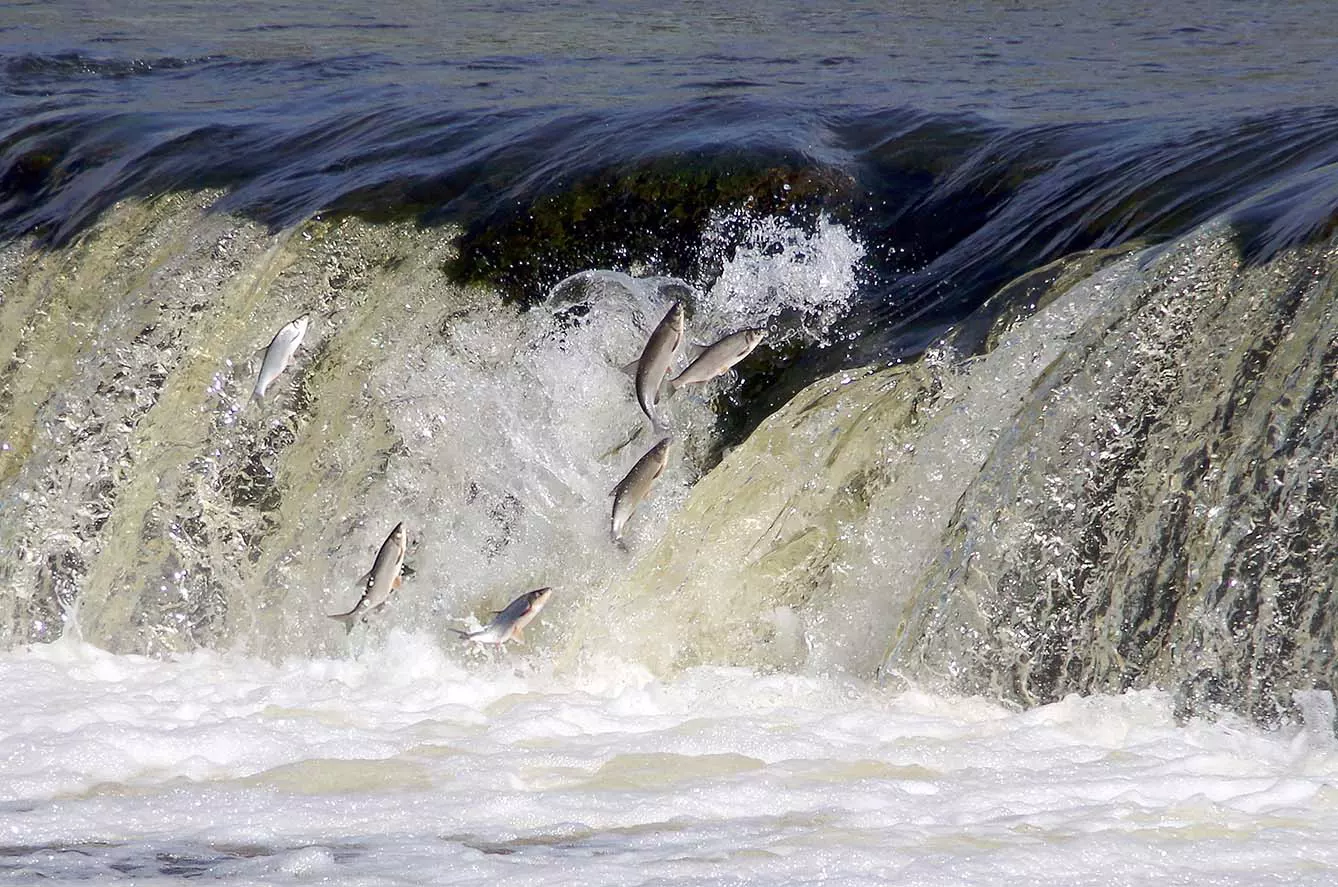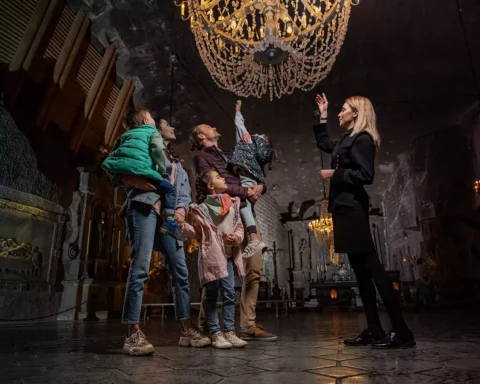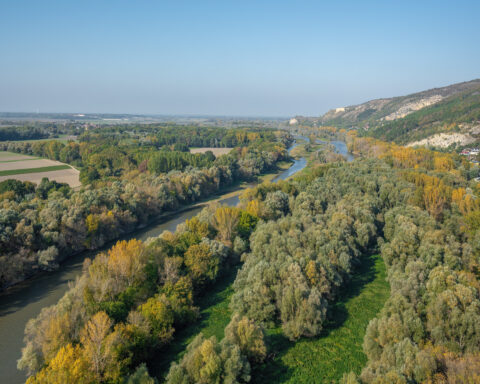Although it may sound like a South American dance, Ventas Rumba is, in fact, a Latvian waterfall. Perhaps ‘rapid’ is a more accurate description because at only two meters high, ‘waterfall’ might be a slight exaggeration. However, what it lacks in height, it makes up for in width. During low water periods, it spans 149 meters and can extend up to 270 meters during the spring floods.
Ventas Rumba: where you’re allowed to run naked
Located conveniently near the town of Kuldīga, it is one, but certainly not the only, curiosity worth seeing around. The historic town of Kuldīga was established on the River Venta in the 13th century and soon developed as an important part of the Kurzeme region and a member of the Hansa League. The old town is now mostly 17th and 18th-century wooden buildings, with important larger objects such as a town hall and an iconic 19th-century brick bridge across Venta.
And it is the bridge that may be the most curious tourist attraction around. Especially on Midsummer night, the visit goes with benefits. That’s when the bridge is the site of a traditional naked run, with scores of people celebrating the shortest night of the year with a full monty jog.


The common understanding is that midsummer is one of the most important holidays in Baltic countries, as it recalls a pagan past, which dominated the area until quite recently (relatively speaking). These remnants of pagan ceremonies can be very frank in what they really are: celebrations of life and its pleasures, easiest to appreciate during the longest summer days. In Latvia, it is even said that you can observe a baby boom each year, precisely nine months after the midsummer solstice.
The Kuldīga rapids
If you already are on the old brick bridge over the Venta but unfortunately missed the clothing-optional run, it’s still worthwhile to just enjoy the site of the waterfall. And there are, in fact, two ways to do so. First is obviously the old brick bridge, but only 240 meters away is a wooden walking path that takes you along the river bank.
Picturesque as they are, such rapids were once usually considered an obstacle, especially for any town wishing to use the river for transit. Rapids required people to land their boats and detour the waterfall by road. The most famous rapids of them all, Ukraine’s Porohy, were for that reason demolished by the Soviets in the 1930s.
However, the 17th-century Duke of Courland, Jacob Kettler, who ruled Kuldīga, had a different sort of plan. Instead, his idea was a channel that would allow the rapid to be bypassed. Construction started but was never completed as the dolomite rock was too hard to break. The duke eventually gave up when mining blasts cracked the walls of his palace. A canal was ultimately built in the 19th century, though it is no longer in use.
However, there was one more business developed in that period: fishing. Ventas Rumba is a place where fish such as salmon once literally jumped out of the water. Although salmon and sturgeon are no more in the current, you can try your luck at catching vimba.







